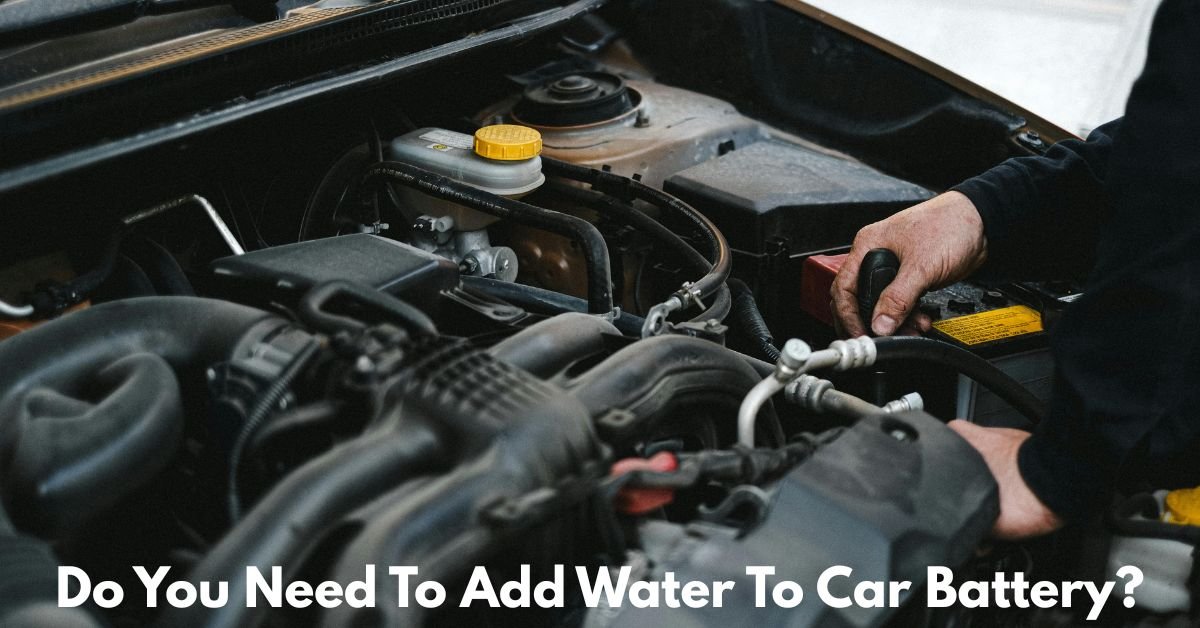If you’re like many car owners, you may not think much about your car battery until your engine refuses to start. But just like oil changes and tire rotations, battery maintenance is essential for the health of your vehicle. One question that often comes up is: Do you need to add water to a car battery? The short answer is—it depends on the type of battery you have. Let’s dive into why water might be needed and how to know if your battery requires it.
Do You Need to Add Water to a Car Battery?
Understanding How Car Batteries Work
Car batteries, specifically lead-acid batteries, operate through a chemical reaction between lead plates and sulfuric acid. This reaction generates electricity that powers your vehicle’s electrical systems and helps start the engine. In conventional flooded lead-acid batteries, the lead plates are submerged in an electrolyte solution, which is a mix of sulfuric acid and water.
Over time, due to the heat under the hood and the charging process, some of the water in this solution evaporates. If the water level gets too low, the lead plates can become exposed to air. This exposure can cause the plates to corrode and significantly reduce the battery’s lifespan or cause it to fail altogether.
Types of Car Batteries: Know the Difference
There are several types of car batteries on the market, and knowing which one you have is key to determining whether water maintenance is necessary.
1. Flooded Lead-Acid Batteries (Serviceable)
These are traditional car batteries with removable caps. You can check the water levels and top them up with distilled water as needed. These are the only types of batteries where adding water is a part of regular maintenance.
2. Sealed Lead-Acid Batteries (Maintenance-Free)
As the name suggests, these batteries are sealed and do not allow access to the internal electrolyte. They are designed to minimize water loss, and you do not need (or want) to add water to them. Doing so can damage the battery.
3. AGM (Absorbent Glass Mat) Batteries
One kind of sealed lead-acid battery is an AGM battery. They’re more advanced, with fiberglass mats that absorb the acid, making them spill-proof and maintenance-free. No water should be added.
4. Lithium-Ion Batteries
Used mainly in electric or hybrid vehicles, lithium-ion batteries don’t use water at all. Their chemistry is entirely different, and they require zero electrolyte maintenance.
Must Read: 2 Best Guides Does Subaru Crosstrek Have Heated Steering Wheel?

How to Check Battery Water Levels (For Serviceable Batteries)
If your car has a serviceable flooded battery, here’s how you can check and add water:
- Safety First: Wear gloves and eye protection. Verify that the battery is cool and that the engine is off.
- Locate the Battery: Locate the battery beneath the hood. Look for caps on top—these might be twist-off or flip-top.
- Open the Caps: Carefully remove the caps. You’ll see the fluid level inside.
- Check the Level: The fluid should be just enough to cover the interior plates. Water should be added if the plates are visible.
- Add Distilled Water: Use only distilled water, never tap water, as minerals and impurities can damage the battery.
- Close the Caps: Once the levels are correct, securely close the caps.
How Often Should You Add Water?
There’s no one-size-fits-all answer. Water loss depends on driving habits, weather conditions (hot climates increase evaporation), and how often the car is used. As a general rule, check your battery every 3 to 6 months if it’s a serviceable type.
Signs Your Battery May Need Attention
- Slow engine crank
- Battery warning light on the dashboard
- Corrosion around terminals
- Unusual smells (like sulfur or rotten eggs)
These symptoms could point to low water levels or other battery issues.
Final Thoughts
So, does a car battery require water? Yes, but only if the flooded lead-acid battery is still usable. Most modern cars come with maintenance-free batteries, so chances are, you won’t need to worry about it. However, if you do have a battery that requires topping off, a little regular attention can go a long way in extending its life and ensuring your car starts when you need it most.
Remember, if you’re ever unsure, consult your vehicle owner’s manual or ask a professional mechanic. Proper battery maintenance is a small task that can prevent major headaches down the road.
